Tonatiuh
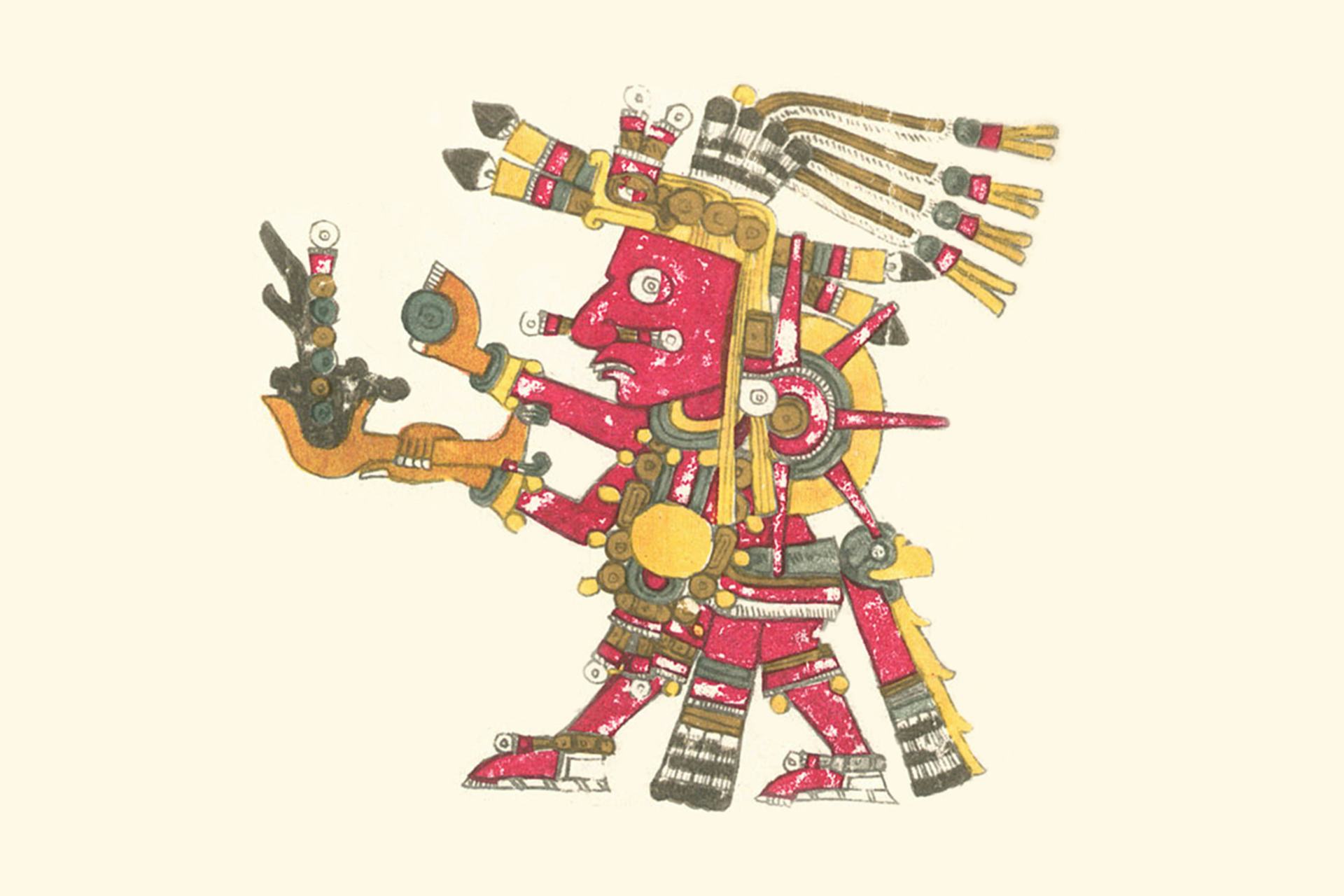
Overview
According to Aztec beliefs, the current era is the fifth age. The previous four ages were defined by their unique sun—each of which was ultimately destroyed. After the fourth sun was destroyed, the Aztec gods gathered together to create the fifth and final sun: Tonatiuh.
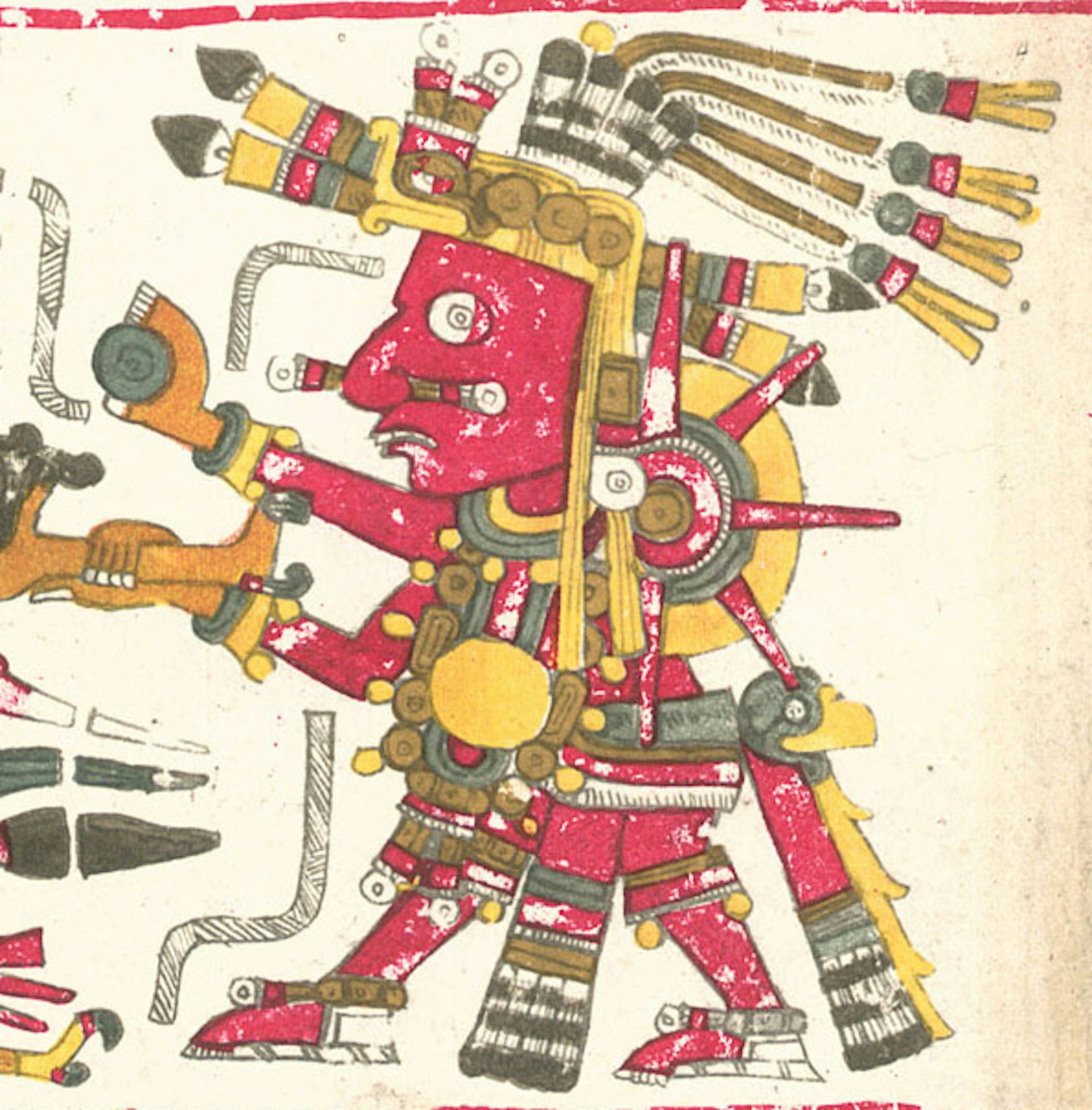
Tonatiuh as depicted in the 16th-century Codex Borgia.
FAMSIPublic DomainLike the suns that preceded him, Tonatiuh was not immortal. Upon his death, the world would descend into permanent darkness and the reign of men would come to an end.
Etymology
Tōnatiuh’s name was derived from the Nahuatl words tona (“for there to be heat”) and yauh (“to go”). When used together, these terms meant “it goes along emitting heat.”[1] The word could be used both as the proper name of the god Tonatiuh and more casually in reference to the sun itself.
The Aztecs frequently referred to their gods by multiple names, and Tonatiuh was no exception. Traditionally, Aztec gods and individuals would go by the calendar name of their date of birth. Tonatiuh was created on naui olin, or “4-Movement.”[2] This name was part of a prophecy predicting that the current age would be destroyed by earthquakes.
Attributes
Tonatiuh was usually depicted wearing red paint and an eagle headdress.
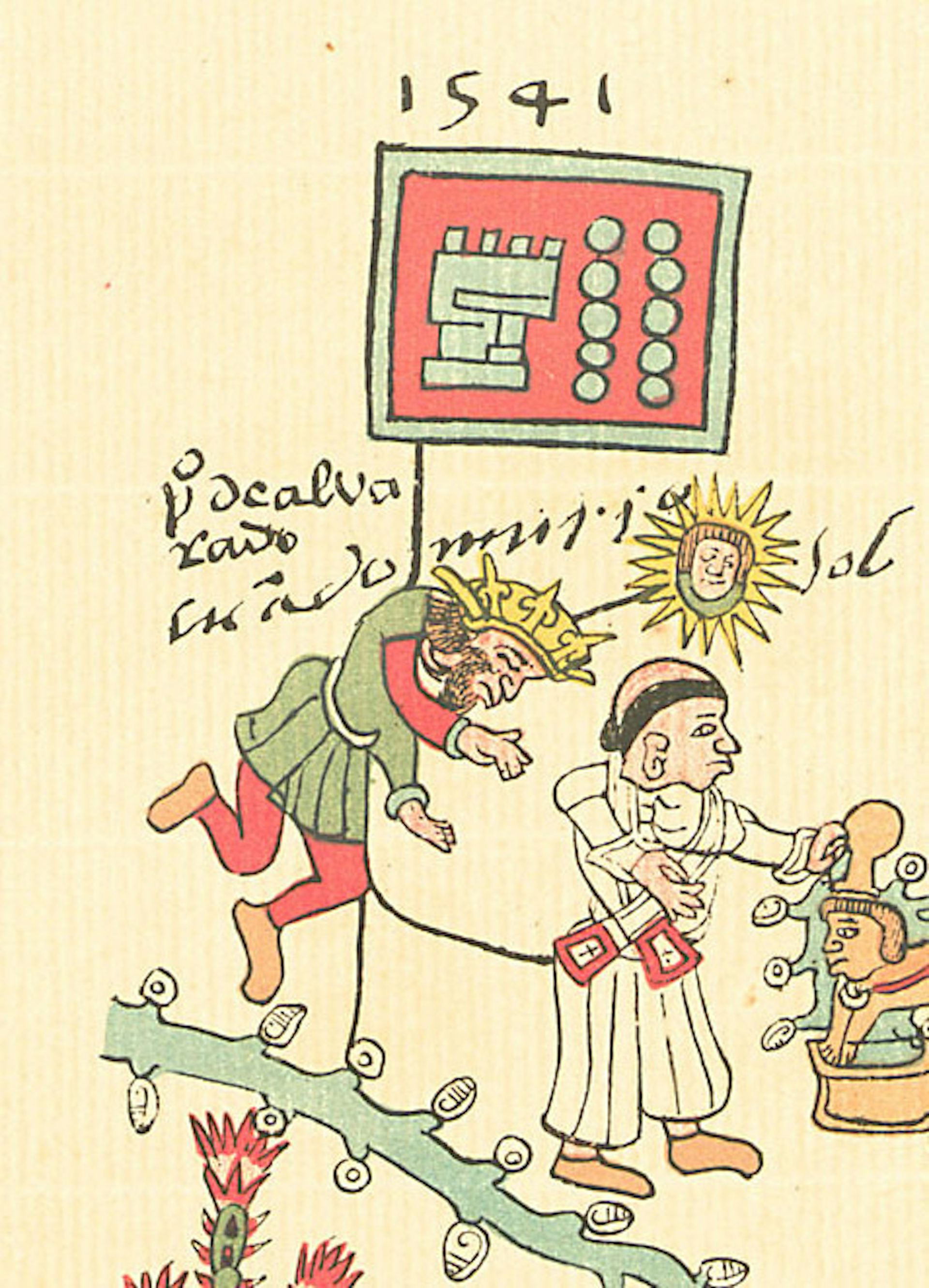
This vignette from the Codex Telleriano-Remensis illustrates the death of the conquistador Pedro de Alvarado. The sun above his head references his nickname, which he shared with the sun god.
FAMSIPublic DomainWhen the Aztecs encountered the Spanish, they gave the red-headed conquistador Pedro de Alvarado the nickname Tonatiuh. Whether this nickname referenced his red hair, fiery temper, or both is unclear.[3]
Family
As Tonatiuh was created through the sacrifice of the god Nanahuatzin, he lacked traditional parentage and relations. Some interpretations hold that Nanahuatzin was not destroyed, however, and was instead merely transformed. According to such interpretations, Tonatiuh was Nanahuatzin or was of Nanahuatzin.
Nanahuatzin was closely linked to the god Xolotl—so closely, in fact, that the two may have simply been different representations of the same deity.[4]
Family Tree
Parents
Father
- Nanahuatzin
Mythology
Tonatiuh was formed by the Aztec gods following the destruction of the fourth age. His creation required the sacrifice of gods, and setting him in motion required still more blood to be spilled. Even once set in motion, however, the Aztecs did not believe Tonatiuh to be eternal, predicting his destruction by earthquakes. The Aztecs held that when Tonatiuh’s end eventually arrived, humanity would be destroyed.
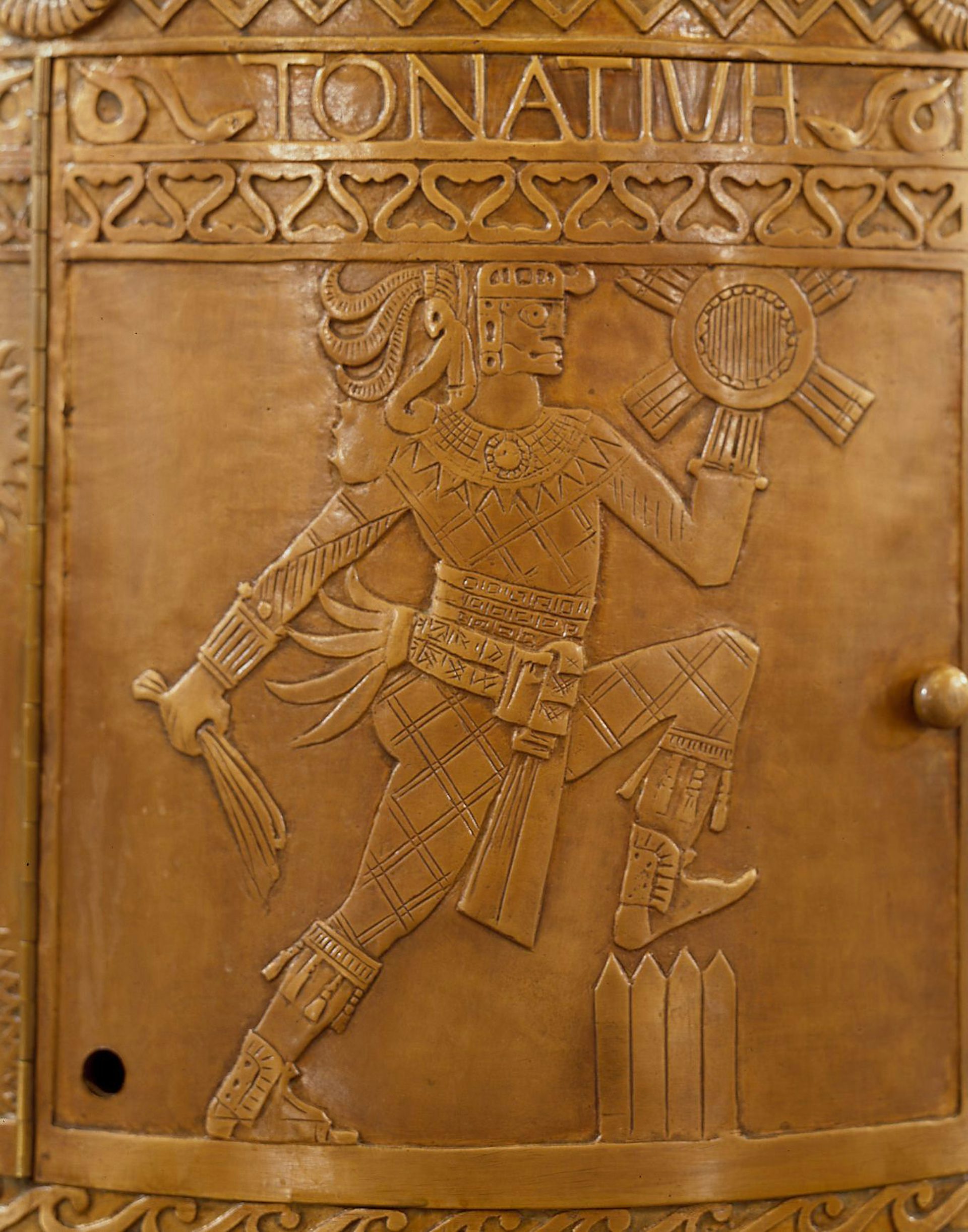
This Tonatiuh relief appears alongside images of other ancient deities at the National Academy of Sciences building in Washington, D.C.
Carole M. Highsmith/Library of CongressPublic DomainThe Beginning of the Fifth Age
A central tenant in Aztec cosmology was that of the five suns. Each sun was created by—or out of—a god. The fourth sun was the goddess 4-Water, sometimes identified as Chalchiuhtlicue, one of Tlaloc’s wives.[5] The fourth age ended with 52 years of flooding which destroyed the sun and left the Earth in darkness.
The Aztec gods sought to create a new sun to return light to world, and it was decided that both Tecciztecatel and Nanahuatzin would be sacrificed to bring it into existence.
Both of the gods prepared for their sacrifice by fasting for four days. Tecciztecatel’s preparations were extravagant:
His ritual branches were of quetzal feathers, His grass heart was woven of gold, His spine was of greenstone [likely jade], …The bloodletting, blood-covered instrument was of coral, And, his incense was copal, a very fine copal [a highly prized resin.][6]
Nanahuatzin, on the other hand, was a homely god, and it showed in his preparations:
His ritual branches were made only of green grass and green reeds…, And his grass ball was woven only of pine needles, And his bloodletting spine was only a maguey thorn, …And his incense consisted of only scabs that he was twisting off.[6]
Despite his lavish preparations, Tecciztecatel refused to leap onto the pyre four times. Nanahuatzin, however, dove onto the pyre on his first attempt. Not wanting to be outdone, Tecciztecatel launched himself into the flames at last.
By the time Tecciztecatel landed in the flames, however, “the fire was no longer very well arranged…he was burned just a little [and] spattered with black soot.”[7]
As the flames died down, Nanahuatzin was turned into a blackened eagle before becoming the radiant sun Tonatiuh. Tecciztecatel, who was not fully burned, emerged as a spotted jaguar. Unfortunately, the botched sacrifice had resulted in two motionless suns. The gods resolved the duplication by beating Tecciztecatel to death with a rabbit, thus turning him into the moon—dimmer, without heat, and with the imprint of the rabbit left upon his face.[8]
Setting the Sun into Motion
With the sacrifice compromised by Tecciztecatel’s late entry into the pyre, Tonatiuh was little more than a motionless form in the sky. The assembled gods decided that the only way to solve this predicament was for yet more gods to be sacrificed. Thus, the god Ehecatl (the wind god manifestation of Quetzalcoatl) set about slaying them. Though one god—Xolotl—resisted, Ehecatl eventually caught up to him and killed him.
Despite this godly massacre, the sun still did not move.
Ehecatl would not back down, however:
Ehecatl did his work. Ehecatl stood up straight. He ran and blew lightly. Instantly, he moved [the sun].][9]
The Demise of the Fifth Age
According to Aztec mythology, the universe had existed through five distinct ages, each with its own sun. The previous four eras had met with destructive fates predicted by the names of the suns that governed them. The suns themselves were named for the days on which their ages began—a naming practice that carried over to gods as well as individuals.
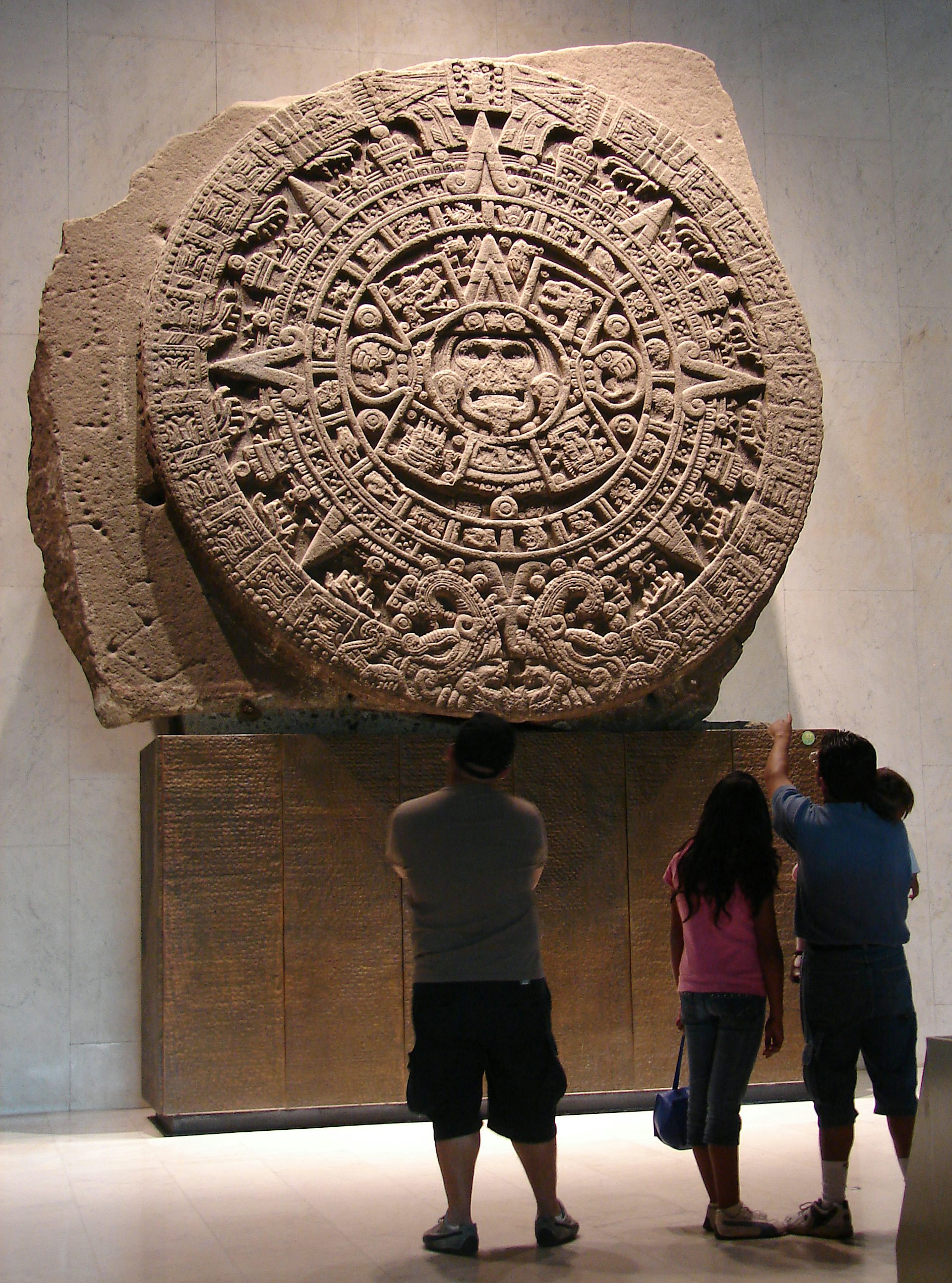
The central disk of the massive Stone of the Sun at the National Anthropology Museum in Mexico City features Tonatiuh at its center. He is surrounded by the previous four suns.
Antony StanleyCC BY-SA 2.0Age One: 4-Jaguar, destroyed by jaguars
Age Two: 4-Wind, destroyed by wind
Age Three: 4-Rainstorm, destroyed by a rainstorm…albeit a rainstorm of volcanic fire.
Age Four: 4-Water, destroyed by massive flooding
Age Five: 4-Movement, the current age. The Aztecs believed this age would be destroyed by earthquakes.
The Aztecs believed that when 4-Movement/Tonatiuh was finally destroyed, humanity would be destroyed as well.[10]
Pop Culture
Louis Fogerty's webcomic “Whats New Under Tonatiuh” featured Tonatiuh, Nanahuatzin, and an assemblage of other Aztec deities.